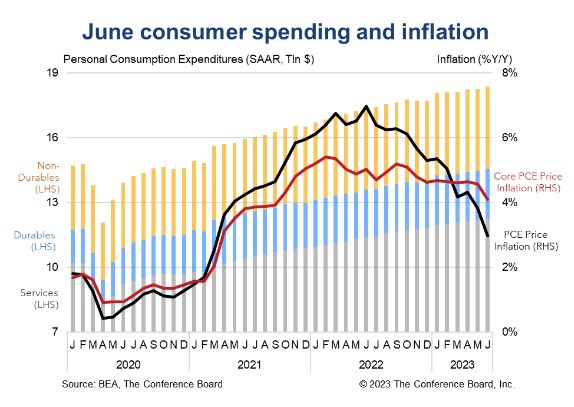The 'Moneyball' approach to picking stocks and 8 that make the team
Sports fans love to apply sporting analogies to life (and finance) with good cause – solid fundamentals (like a quality athlete) and hard work can seriously pay off. But it’s worth noting that paying attention to the numbers has equal benefits in sports or in investing. If there’s no greater lesson to take from Michael Lewis’ bestseller Moneyball, or its Hollywood counterpart, it’s that you can achieve great things with a limited budget by using analytics to identify a team (portfolio) of solid players (stocks) at attractive prices (good valuations).
It’s a lesson that Vihari Ross, portfolio manager for Antipodes Partners, applies in the Antipodes Global Fund. In fact, if she argues that if she had to pick a celebrity to embody the fund, it would be the subject of Moneyball - Billy Beane, the General Manager of the Oakland Athletics at the time.
“He was rational, yet open-minded and willing to explore ideas overlooked by the broader industry. His bringing analytics to choosing the Oakland baseball team was ground-breaking and what he delivered with his limited budget was a portfolio of attractively priced players to great success,” she says.
It’s with this approach, Ross has identified China as an area of the market that the market has overlooked, but offers huge potential. She is particularly interested in value opportunities in internet stocks, selective re-opening services. and emerging multi-nationals.
“We are conscious that the geopolitics are still tense, and China’s longer-term growth rate is drifting lower (but is still quite a lot higher than the developed world). The short-term will remain bumpy, but Chinese valuations are already discounting a severe negative outcome on these risks,” she says.
In this edition of Rapid Fire, Ross shares her investment process, insights into the areas she is monitoring in China, the rationale for significant players like Alibaba in the portfolio and the company she’d ‘bet the house on’.
%20(3).png)
What is one area of the market that has huge potential but no one is paying attention to?
It’s the valuation discount for high-quality stocks in China.
Many investors have been spooked by regulatory and geopolitical concerns and have since stopped looking altogether – a recent conference in China attended by our Emerging markets team had virtually no other foreign investors in attendance!
Investors who are simply putting China in the too-hard basket are missing the material valuation and growth opportunities available in the market.
So, in China we are being very selective, and looking for investment cases that still stand with a slower recovery.
There are 3 clusters of opportunity we are particularly interested in:
-
The valuation opportunity in internet stocks.
If you look at Alibaba (NASDAQ: BABA) and Baidu (NASDAQ: BIDU), they’re trading at 11-12x vs. the magnificent 7 (exposed to similar long-term tailwinds) at 36x. -
Selective high-quality reopening services where the recovery is accelerating.
Integrated resort player Galaxy Entertainment Group (HK: 0027), dominant in Macau, is a great example. It’s benefiting from local travel and a return to pre-COVID levels of activity. -
Emerging multinationals – this is a really interesting and overlooked part of the market.
A good example is Midea (SHE: 000333), one of the largest aircon manufacturers in the world. It is supported by longer-term structural growth, leveraging their domestic leadership and scale to deliver growth in export markets.
We are conscious that the geopolitics is still tense, and China’s longer-term growth rate is drifting lower (but is still quite a lot higher than the developed world!), and the short term will remain bumpy, but Chinese valuations are already discounting a severe negative outcome on these risks.
Two of the largest holdings in the global portfolio are Alibaba (NASDAQ: BABA) and TotalEnergies (EPA: TTE). What is the rationale behind this?
Alibaba:
In the case of Alibaba, you’re paying 11x for a business with core earnings growing 10-15% p.a. as the company focuses on accountability and profitability.
Weak sentiment and Chinese economic headwinds have weighed on the Alibaba share price, but the outlook for the business has become more positive. This has presented a great opportunity for investors looking for value.
The e-commerce business continues to have a leading market position and is highly cash generative. It won’t achieve the same levels of growth as in its heyday and is navigating the current economic slowdown today, but, outside of the short-term economic turbulence, it will be correlated with retail sales growth of 5-6%.
We estimate that you are only paying 9x for this.
The recent reorganisation into independent groups has created a mindset shift that brings responsibility and a profitability imperative to the subsidiaries vs. the prior status of growth at any cost start-ups being funded by the e-commerce core.
It will also enable BABA to unlock significant valuation upside and this tighter alignment with shareholders combined with a move to spin off businesses is resulting in a substantial return of capital via buybacks. They have bought back 8% in the last 2 years extended to a further 7% in the next 18 months.
Importantly for investors and a turnaround in sentiment - we are seeing an end to the regulatory crackdown of recent years, with Jack Ma out of the sin bin. And I note the Chinese government is seeing these internet companies as an important solution to the youth unemployment issue they need to solve.
TotalEnergies:
TotalEnergies sits within our energy transition cluster. It is positioned for the decarbonisation investment cycle, priced at a 13% free cashflow yield at today’s oil price.
While net zero is the goal, the starting point is a world where about 70% of primary energy still comes from oil, gas and coal. Since gas has half the emissions of coal per unit of electricity produced, it is an important stepping stone in the journey to decarbonisation (and the energy that needs to be expended to deliver on it).
TotalEnergies generates half its upstream profits from natural gas and the other half from oil, but the company is investing in what we term “green realism” – recognising that fossil fuels will not disappear overnight but need phasing out through reinvestment in other energy sources.
In this vein, more than half of TotalEnergies' capex is going towards gas as a transition energy source, renewables, hydrogen, and other transition technologies like biomass. Total Energies' management indicated that by 2030, 50% of the company’s revenue will be gas, with oil falling to 30%.
In this context, we’ve had a prolonged period of underinvestment in conventional energy due to ESG pressures not to invest, weak balance sheets from prior excess spend, and preference from shareholders for returns as opposed to capital investment. As a result, spare capacity in the market has fallen which is supportive of energy prices and leaves TotalEnergies, which has continued to invest, in a strong position compared to peers.
Information technology and consumer discretionary are the biggest sector positions in your portfolio. Given we've spent the last year pre-empting a recession and such sectors can struggle in a downturn, why do you hold high conviction here?
Firstly, a Western recession is still our base case, and we remain relatively defensively positioned with a preference for attractively priced quality and growth while maintaining our tilt to value. So yes, we have significant aggregate weights to these sectors, but it is more insightful to look at our exposures by region as well as sector to see where our relative macro and valuation views land.
Even though we have a substantial tech exposure, we are still underweight the benchmark for the sector led by semiconductors and hardware because the stocks are expensive - priced for an extrapolated investment cycle supporting sustained higher growth and a buoyant economy. This puts them at risk of cyclical disappointment.
We are underweight the magnificent 7 in aggregate. They’ve been seen as defensives, with earnings holding up due to cost cutting (even through revenues have slowed down) combined with all the enthusiasm around AI, they have now become 27% of the S&P500 index.
We do have exposure to 3 of the 7, in particular on the cloud and software side, most notably in Microsoft (NYSE: MSFT), where cloud take up is at an earlier stage of adoption and they are better positioned to be able to monetise AI investments from their installed base.
For the consumer-facing side though, the business models are naturally maturing, and so are more economically sensitive than their current ‘perfection level’ valuations would imply. These stocks are collectively trading at 36x forward earnings vs. the rest of the S&P 500 at 18x, what they need to deliver to justify the valuation is really challenging in the context of their revenues slowing down.
On the consumer discretionary side, we are overweight the sector globally but underweight in the US where the stocks are not really priced for a recession, and we are overweight in China. Here, as I mentioned we are focusing on very high-quality names that are priced for a very deep downturn vs. their underlying structural opportunities that remain intact.
While a modest level of stimulus has begun to take place at the regional level, we note that China has the capacity for further economic support relatively unabated given their positive capital account, which is a bullet still up their sleeve.
What is the 2-minute story of how you select stocks?
Our philosophy is pragmatic value, so we’re looking for companies that are attractively priced versus their competitive advantages and growth profile.
So, stock selection starts with industry research – we are doing very thorough work to understand the industry – what are the growth opportunities, cyclical or structural, and which names are advantaged and likely to be the winners.
Among the winners, we want to understand the growth opportunity, crucially, whether a business is mispriced. Because we are predicting the future, I then want to understand what the range of outcomes might be around that stock valuation, and that helps to build conviction and to favour the companies where it’s skewed to the upside.
The final element is how this comes together in a portfolio that’s built from the best ideas, but at the same time is diverse from a business model perspective such that we can allow the valuation opportunities to play out and participate in growth, while also preserving our investors' capital.
For you to sell a stock tomorrow, what would need to have happened?
Our sell discipline is a key part of the investment process and is centred around three key triggers.
- If the valuation target is reached on a stock, and investment case has played out.
- If there are better return opportunities in an alternative investment idea.
- If the investment case for the stock has changed or the range of error is skewed to the downside from a risk vs. reward perspective.
We also systematically review stocks that move against us, to ensure monitoring of the risk of investment case drift or a change in the distribution of predicted outcomes.
What stock would you never hold and why?
A stock that doesn’t meet the minimum threshold of business resilience and competitive advantage.
What I mean by this is that we never own stocks just because they are cheap. Sometimes, the stock will be cheap for a very good reason!
That is, there is a structural change in the industry and the company is being outcompeted or permanently disrupted by its competitors and avoiding these value traps by identifying business resilience is a key part of our process.
What stock would you 'bet the house on' if you had to?
Merck (NYSE: MRK)
Merck is a leading global pharmaceutical business headquartered in the US and displays multiple-ways-to-win via its premier R&D engine (Merck research labs), strong balance sheet, growing pipeline, limited patent cliff risk, insulation from US drug pricing concerns and defensive businesses lines in the form of vaccines and animal health. In fact, Merck generates around a third of its sales outside of drug development from its vaccines and animal health businesses – which are sticky, long-duration businesses with consolidated markets and high barriers to entry.
In terms of their pharma business, they have Keytruda which is the most successful immuno-oncology drug (ever) generating $20b in revenue, with revenue still growing in the mid-teens. Despite patent cliffs beginning from 2028, combination studies with next-generation immuno-oncology drugs have the potential to extend Keytruda’s dominance and in a market environment where uncertainty has risen, Merck has a degree of resilience uncommon amongst mega-cap biopharma peers with the company is growing earnings at 12% p.a. and is trading at only 13x times earnings.
The chart: US consumer spending and inflation print

How promising is the above for the US economy and, in turn, the companies you hold in the global portfolio?
One of the ways quantitative and macro data enhances our investment process is in being able to stress test the portfolio around alternate macroeconomic scenarios compared to our base case. Our portfolio is designed with flexibility that enables us to build a cluster of names that will provide a hedge and source of upside in these scenarios.
So far we’ve seen the US hold up with positive fiscal stimulus going on (despite what the Fed has been trying to do on the monetary policy side) and that’s supporting a resilient services sector, but the leading indicators continue to point to an economy that will weaken.
The impact of monetary policy changes typically take 12 – 18 months to be felt and so we may be yet to see this happen in the US which will challenge growth. The Fed also really needs to curb wages growth to get on top of sticky core inflation. So recession remains our base case, as well as higher inflation than the free money era pre COVID, and the portfolio is relatively defensively positioned.
However, if inflation does fall faster than growth, and the Fed is able to pull off a soft-landing, then early-stage cyclicals should do well.
We have been building a cluster of these exposures into the portfolio, such as the auto-sector which didn’t over earn over the covid fiscal stimulus era, and they have derated due to the manufacturing recession (leading services) – they have essentially been left behind in the very concentrated Magnificent 7 rally and are good value today.
We are finding the cheapest exposure to the US is via European multinational stocks, which have substantial American businesses.
A good example of this is Stellantis (BIT: STLAM), which owns the Chrysler and Dodge brands and is trading on a PE of 4x. If the more benign scenario doesn’t play out as is our base case, then our investment case for the business still stands but with a longer time horizon to it.
Fun question - which celebrity or famous figure does your fund embody?
I’m going to say Billy Beane – manager of the Oakland baseball team – his story was made famous in the movie Moneyball.

He was rational, yet open-minded and willing to explore ideas overlooked by the broader industry, his bringing analytics to choosing the Oakland baseball team was ground-breaking and what he delivered with his limited budget was a portfolio of attractively priced players to great success… and also, who wouldn’t want Brad Pitt to play them in a movie!?
For more information on the Antipodes global portfolios, select below:


3 topics
5 stocks mentioned
2 funds mentioned
1 contributor mentioned


